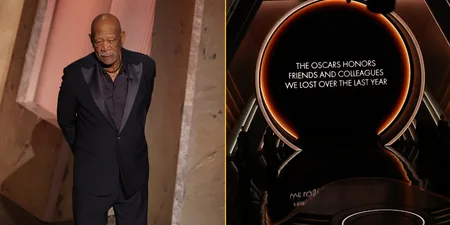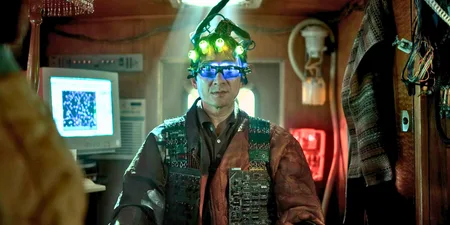“My name is Max. My world is fire, and blood.”
These words open Mad Max: Fury Road, and quite neatly sum it up. Engines and action. Driving and fighting. It’s elemental, primal, and yet as anyone who has seen it knows, Fury Road is also a technically ambitious and beautifully choreographed piece of art.
Blockbuster entertainment at its finest, Fury Road was a huge hit with critics and audiences alike, finding its way to the top of many ‘Best of 2015’ lists. Two years later and Fury Road is returning in a different guise: black and white.
Mad Max: Fury Road Black and Chrome Edition will be out on Blu-ray and digital download on May 15, but its release raises a puzzling question: why?
These days, black and white is a film medium reserved almost exclusively for the arthouse scene. In the past, filmmakers have used black and white film stock to save money – think Kevin Smith’s debut Clerks – but now you can shoot a movie in glorious, full-colour HD on an iPhone.
In major motion pictures, choosing to shoot black and white is only ever a stylistic decision. In some movies – the Best Picture-winning silent film The Artist or noir comic book adaptation Sin City, for example – the material demands it. Some filmmakers shoot in black and white for its poetic quality, or to convey a sense of prestige, or simply because they’re filmmakers and they can.
What you never, ever see, though, is an action film made in black and white. One reason why: the potential crossover between fans of balls-to-the-wall action movies and people who enjoy black-and-white cinema is, if we’re being cynical, likely very slim. So why Fury Road, the most actiony of all the action films to be released this century?
In his introduction to the black-and-white cut, director George Miller explains his decision:
“The best version I ever saw of Road Warrior was when the composer, Brian May, was on the soundstage conducting the orchestra.
“In those days, the recording studio used a black-and-white dupe, which is a very, very crude, cheap version of the colour print, and I remember walking in there for the first time and seeing the first black-and-white dupe of Road Warrior, and I thought, ‘Oh my God, that’s how the movie should have been.’
“Something about black and white, the way it distills it, makes it a little bit more abstract, something about losing some of the information of colour, makes it somehow more iconic.”
Film is a director’s medium and Miller is nothing if not an auteur. You don’t make a film like Fury Road by committee; you make it by executing a singular vision.
It’s also a business, and while distributors constantly release extended/harder/special cuts of movies to squeeze out a few extra pennies, a black-and-white version of an action movie is by no means a guaranteed money-spinner.
We assume that the core intent is artistic, then, as all of this appears to be driven by Miller (and who in their right mind would suggest a black-and-white action film for any reason other than artful fancy?).
But the intent and the result are two different things, and when extended, altered or otherwise fiddled-with versions of films come out, you have to consider two points: what has been lost and what has been gained.
What we lose with Mad Max: Fury Road Black and Chrome Edition is the retina-scorching colours, the burnt oranges and screaming blues, the oversaturated post-apocalyptic palette that helped make Fury Road such an eye-popping watch.
What we gain with Mad Max: Fury Road Black and Chrome Edition is a handful of shots that would look cool in an art gallery and a great deal of wishing you were watching the original version.
Individual moments are undeniably beautiful and take on a brooding quality in black and white, as this album of stills shows, but Fury Road is storytelling in motion; it speaks by doing. It’s a dance, a ballet, and one that doesn’t lend itself particularly well to monochrome.
Miller says it himself in his introduction: “Some scenes in particular play a lot better, and some there’s some information that we got from the colour that’s missing.” Unfortunately, it’s more than some – it’s quite a lot.
Mad Max: Fury Road Black and Chrome Edition is an interesting experiment, to give it its dues, and one that looks set to be repeated with Hugh Jackman’s last appearance as Wolverine in Logan Noir.
Logan may lend itself better to the black and white treatment, possessing a greater and more purposeful melancholy than Fury Road and relying less on movement to tell its story, but equally its scenes of graphic, grisly violence may find themselves neutered and bloodless without colour.
Regardless, who would have thought we’d be looking at not one but two top-notch action blockbusters in black and white, and really, why not? It’s a bold move and one worth making, but in the case of Mad Max: Fury Road, it hasn’t quite paid off. For George Miller, however, it’s a vision realised.
“For me, it’s the best version of the movie,” he says. “It’d be interesting to see if you agree.”
Mad Max: Fury Road Black and Chrome Edition is available on Blu-ray and digital download on May 15.










































